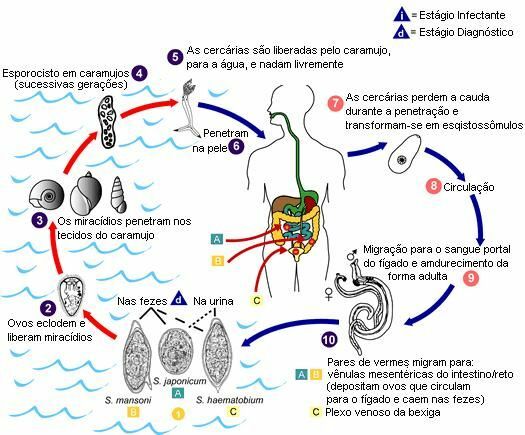THE anemia it is a condition in which the levels of red blood cells (red blood cells) in the blood decrease. It is a common situation and can be associated with other illnesses.
Red blood cells are the cells responsible for transporting oxygen in the blood, and for this function they rely on the presence of hemoglobin.
Anemia symptoms
The first sign of anemia is intense tiredness, even in simple everyday activities. The main symptoms of anemia are:
- Tiredness;
- Fatigue;
- Pallor;
- Dizziness;
- Chest pain;
- Palpitations;
- Hypertension;
- Indisposition;
- Difficulty in learning and apathy (in the case of children).
When anemia becomes more severe, any physical effort, no matter how simple, causes intense fatigue and breathing difficulties.
Causes of anemia

Anemias can be inherited or acquired during life. Hereditary ones are caused by genetic alterations. The acquired ones result from illnesses or lack of nutrients, such as iron, zinc and vitamin B12.
Among the causes of anemia are:
- When there is not an adequate amount of Red Cells in the blood;
- Intense destruction of red blood cells by the body. They are destroyed faster than synthesized;
- Reduction in red blood cell production by bone marrow;
- Reduction in the amount of red blood cells due to bleeding.
As we have seen, it is important to emphasize that a lack of iron cannot always cause anemia, it can have several other origins and causes.
Types of anemia
The main types of anemia are:
1. Iron deficiency anemia
Iron deficiency anemia is the most common, being caused by iron deficiency in the body. The iron obtained through the diet is used to produce hemoglobin, which enables the transport of oxygen in the blood.
This type of anemia can originate after bleeding, heavy menstruation and lack of iron intake in the diet.
2. hemolytic anemia
Haemolytic anemia occurs when the body produces antibodies that destroy blood cells. At the same time, the bone marrow cannot synthesize enough red blood cells to replace those that are being lost.
It can cause differentiated symptoms such as: bad mood, dizziness, bruises on the skin, paleness, dry skin and eyes.
3. sickle cell anemia

Sickle cell anemia is an inherited disease that causes red blood cells to deform, making them sickle-shaped. As a result, the membranes of these cells are altered and can easily break.
In addition, the differentiated shape of the cells also makes it difficult for blood to pass through the thinnest vessels, making tissue oxygenation difficult.
The main symptom of the disease is yellowish skin and eyes (jaundice).
4. megaloblastic anemia
Megaloblastic anemia occurs due to a decrease in red blood cells, which are large and immature.
Furthermore, they do not perform their functions correctly, for example, there is a reduction in DNA synthesis. At the same time, there is also a decrease in platelets and white blood cells.
It is caused by a deficiency of vitamin B12, which is important for the synthesis of hemoglobin and folic acid (vitamin B9). Consequently, these two substances contribute to the formation of DNA.
Diagnosis of anemia
Anemia is confirmed by blood tests, which are analyzed based on reference values for hemoglobin.
| Age | Hemoglobin |
|---|---|
| 2 to 6 years | 11.5 to 13.5 g/dL |
| 6 to 12 years | 11.5 to 13.5 g/dL |
| Men | 14 to 18 g/dL |
| Women | 12 to 16 g/dL |
| pregnant | 11 g/dL |
Values below the reference indicate the possibility of anemia. However, it is important to note that low hemoglobin levels can also indicate other diseases or conditions in addition to of anemia, such as: leukemia, cirrhosis, use of some types of medication, hemorrhage and iron deficiency and vitamins.
Therefore, additional tests may be ordered to confirm the diagnosis and find out in more detail the cause of anemia and initiate the most appropriate treatment.
How to treat anemia?
Anemia must be treated according to medical advice and consists of the use of medication and supplements. In more severe cases of anemia, blood transfusions may be necessary.
However, each type of anemia may require different treatment. For example, in severe cases of hemolytic anemia it may be necessary to remove a part of the spleen through surgery.
Foods rich in iron and Vitamin C contribute in the treatment of anemia, examples are: liver, red meat, beans, oranges, lemons, eggs, dark vegetables and wholemeal bread.



